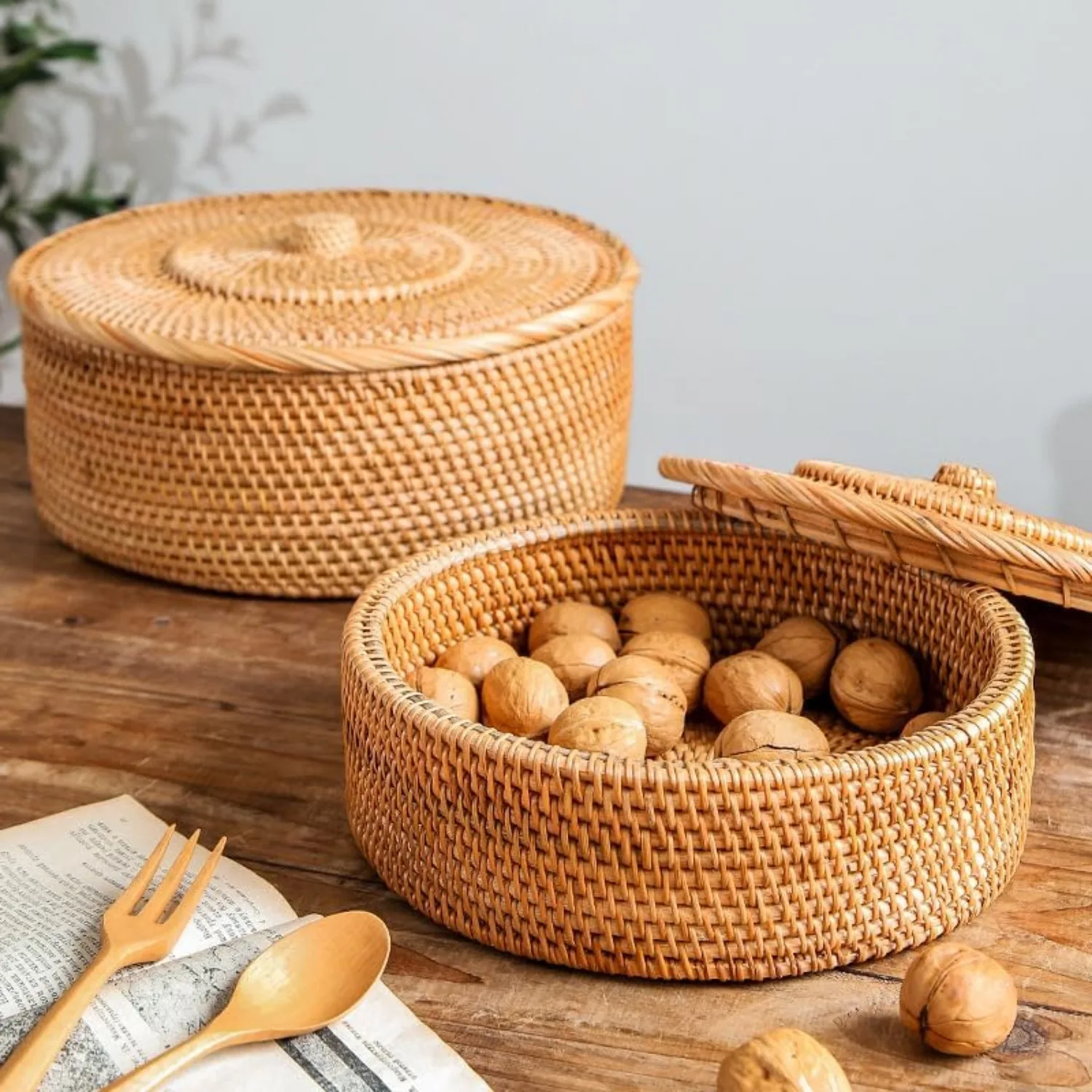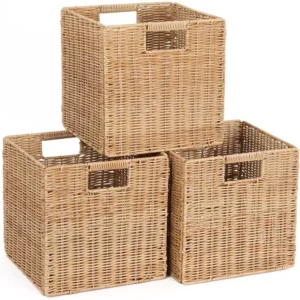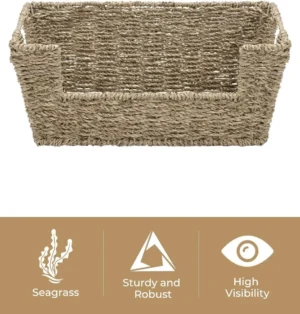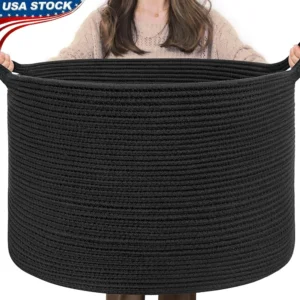Introduction
Wicker baskets have adorned homes across cultures for centuries, bringing a touch of natural warmth and timeless charm to any space. These versatile pieces serve dual purposes—offering practical storage solutions while enhancing your home’s aesthetic appeal. Whether displayed on shelves, tucked under coffee tables, or used for organizing everyday items, wicker baskets blend functionality with beauty in a way few other storage solutions can match.
Proper care is essential for maintaining both the visual appeal and structural integrity of your wicker treasures. Without appropriate maintenance, these beautiful pieces can become brittle, discolored, or even develop mold. With the right care, however, wicker baskets can last for decades rather than just a few years.
Different types of wicker require specific approaches to care—what works for a natural rattan basket might damage a synthetic resin one. This comprehensive guide will walk you through everything you need to know about keeping your baskets in pristine condition for years to come.
At Tidy Treasure, we believe in organizing laundry with wicker baskets and other household items in ways that enhance your home’s beauty while providing practical storage solutions. Let’s explore how to properly care for these versatile pieces.
Understanding Your Wicker Basket
Before diving into specific care techniques, it’s important to identify what type of wicker basket you have. The material determines the appropriate cleaning methods and maintenance approaches.
Natural wicker is made from plant fibers such as rattan, willow, reed, seagrass, or bamboo. These materials bring organic texture and warmth to your space but require more delicate handling. Natural wicker is more susceptible to moisture damage, mold growth, and drying out in low-humidity environments.
Synthetic wicker, on the other hand, is typically crafted from resin or plastic fibers designed to mimic natural materials. These baskets offer greater durability, weather resistance, and typically require less maintenance. They’re ideal for high-moisture areas like bathrooms or outdoor spaces.
| Material Type | Characteristics | Water Resistance | Maintenance Level |
|---|---|---|---|
| Natural Rattan | Thick, sturdy weave with visible grain | Low | High |
| Willow | Fine, tight weave with reddish-brown color | Medium | Medium |
| Seagrass | Coarse texture with greenish tint | Low | High |
| Synthetic Resin | Uniform color and texture | High | Low |
| Bamboo | Rigid, glossy appearance | Medium | Medium |
Identifying your basket’s material is the crucial first step to proper care. Check product labels or examine the texture and flexibility of the weaving. Our wicker baskets collection includes various materials to suit different needs and preferences.
Essential Dos for Wicker Basket Care
Following proper care practices will significantly extend your basket’s lifespan while maintaining its beautiful appearance. The following recommendations apply to most wicker types, with specific variations noted where relevant. Implementing these care practices consistently will prevent damage and keep your baskets looking their best for years to come.
Regular Dust Removal: The First Line of Defense
Dust accumulation is the most common issue affecting wicker baskets. When left unchecked, dust particles can work their way into the weave, causing abrasion and dulling the basket’s appearance. Regular dusting prevents this buildup and maintains your basket’s natural luster.
For effective dust removal:
- Use a soft paintbrush, clean makeup brush, or soft-bristled toothbrush to reach between woven strands
- Work the brush gently along the weave direction, not against it
- Follow up with a microfiber cloth to capture loose dust
- For deeper cleaning, use a vacuum with a brush attachment on low suction
Baskets in high-traffic areas should be dusted weekly, while those in less-used spaces can be maintained with monthly dusting. Always handle baskets gently during cleaning to avoid stressing the weaving points.
Light Cleaning: Maintaining Day-to-Day Appearance
When regular dusting isn’t enough to remove smudges or light dirt, a gentle wipe-down is the next step. This maintenance cleaning helps prevent buildup that would otherwise require more intensive treatment.
For effective light cleaning:
- Prepare a mild cleaning solution (1 teaspoon mild dish soap to 1 quart warm water)
- Dampen—don’t soak—a microfiber cloth with the solution
- Wipe gently along the weave pattern
- Follow immediately with a clean, damp cloth to remove soap residue
- Allow to air dry completely before using or storing
Natural wicker should be cleaned with minimal moisture, while synthetic wicker can tolerate slightly more dampness. Pay special attention to high-touch areas like handles and rims. Our wicker storage baskets are designed for everyday use but still benefit from regular light cleaning to maintain their appearance.
Deep Cleaning: Tackling Stubborn Dirt and Grime
When your basket shows signs of embedded dirt, staining, or general dinginess, it’s time for deep cleaning. This more intensive process should be done sparingly—typically once or twice a year for regularly used baskets.
For natural wicker:
1. Vacuum thoroughly with a brush attachment to remove loose dirt
2. Mix a solution of warm water and mild soap (avoid soaking)
3. Use a soft brush (old toothbrush works well) dipped in the solution
4. Clean with gentle circular motions, focusing on soiled areas
5. Wipe away soap with a barely damp cloth
6. Air dry completely in a well-ventilated area away from direct heat or sunlight
For synthetic wicker:
1. Follow the same initial steps as natural wicker
2. You can use a slightly wetter cleaning approach
3. For stubborn stains, add a small amount of white vinegar to your cleaning solution
4. Rinse more thoroughly, as synthetic materials are less absorbent
5. Air dry completely before use

Always allow 12-24 hours for baskets to dry completely, depending on your climate and humidity levels. Proper drying prevents mold and structural issues that can develop from trapped moisture.
Mold and Mildew Treatment: Preserving Fiber Integrity
Wicker’s natural fibers and intricate weave create perfect hiding spots for mold and mildew, particularly in humid environments. Catching these issues early is crucial for preventing permanent damage and staining.
Signs of mold or mildew include:
* Musty odors
* White, green, or black spotting
* Discoloration
* Brittle or weakening fibers
For safe and effective treatment:
1. Move the basket outdoors if possible
2. Vacuum thoroughly to remove loose spores
3. Create a 1:1 solution of white vinegar and water
4. Apply with a cloth or soft brush, working it gently into affected areas
5. Allow the solution to sit for 15-20 minutes
6. Wipe away with a clean, damp cloth
7. Dry thoroughly in a well-ventilated area with indirect sunlight
For persistent mold issues, a paste of baking soda and water can be applied to affected areas, allowed to dry, and then brushed off. Our collection of products for lasting basket beauty includes specialized treatments that can help address these issues while preserving your basket’s appearance.
Proper Drying Techniques: Preventing Warping and Damage
Proper drying is perhaps the most critical step in wicker care. Inadequate drying can lead to warping, mold growth, and weakened fibers.
For optimal drying:
* Place baskets in a well-ventilated area with good air circulation
* Maintain moderate temperature (60-70°F/15-21°C) and humidity (40-60%)
* Position baskets to allow air to reach all surfaces
* Rotate periodically during drying for even air exposure
* Never use hair dryers, heaters, or direct sunlight to speed drying
* Allow at least 24 hours for thorough drying after any wet cleaning
To check if your basket is completely dry, feel the bottom and inside corners—these areas tend to retain moisture the longest. Even slightly damp baskets should not be stored or stacked until completely dry.
Environmental Protection: Shielding from Harmful Elements
Environmental factors significantly impact wicker longevity. Protecting your baskets from harmful elements will prevent premature aging and damage.
Key protective measures include:
* Position baskets away from direct sunlight, which causes fading and brittleness
* Keep at least 3 feet away from heat sources like radiators, fireplaces, and heating vents
* Avoid areas with extreme humidity fluctuations
* Rotate baskets seasonally to ensure even exposure to environmental conditions
* Consider using a room humidifier in very dry environments (below 30% humidity)
* In extremely humid environments, use a dehumidifier to prevent mold growth
Our wicker baskets with lids offer additional protection from dust and environmental factors while maintaining easy access to contents.
Protective Treatments: Extending Your Basket’s Life
Applying protective treatments creates a barrier against moisture, dirt, and wear, significantly extending your basket’s lifespan. Different wicker materials benefit from specific treatments.
For natural wicker:
* Boiled linseed oil provides moisture protection and enhances natural color
* Clear furniture wax creates a protective barrier without changing appearance
* Spray-on wicker sealant offers convenient application and protection
For synthetic wicker:
* UV-protective sprays prevent sun damage and color fading
* Plastic-specific protectants maintain flexibility and prevent cracking
Application tips:
1. Clean and thoroughly dry basket before applying any treatment
2. Test products on an inconspicuous area first
3. Apply thin, even coats using a soft cloth or brush
4. Allow full drying between coats
5. Reapply treatments annually or when water stops beading on the surface
Protective treatments are especially important for baskets in high-use areas. Proper wicker laundry basket storage ideas can also help protect these frequently used items.
Proper Handling and Storage: Maintaining Structural Integrity
How you handle and store your wicker baskets directly impacts their structural integrity and longevity.
Best practices include:
* Always lift baskets from the bottom or main structure, not by handles alone
* Avoid dragging baskets across surfaces
* Store in cool, dry locations away from direct sunlight
* Don’t stack heavy baskets inside each other
* If stacking is necessary, place lighter items inside heavier ones
* Use acid-free tissue paper to stuff baskets during long-term storage
* Cover with breathable cotton sheets rather than plastic if storing for extended periods
* Check periodically for signs of pest damage or mold during storage
With proper handling and storage, quality wicker baskets can maintain their beauty and function for many years.
Critical Don’ts for Wicker Basket Care
While knowing what to do is important, understanding what to avoid can be equally crucial for preserving your wicker baskets. The following practices can cause significant damage and should be carefully avoided.
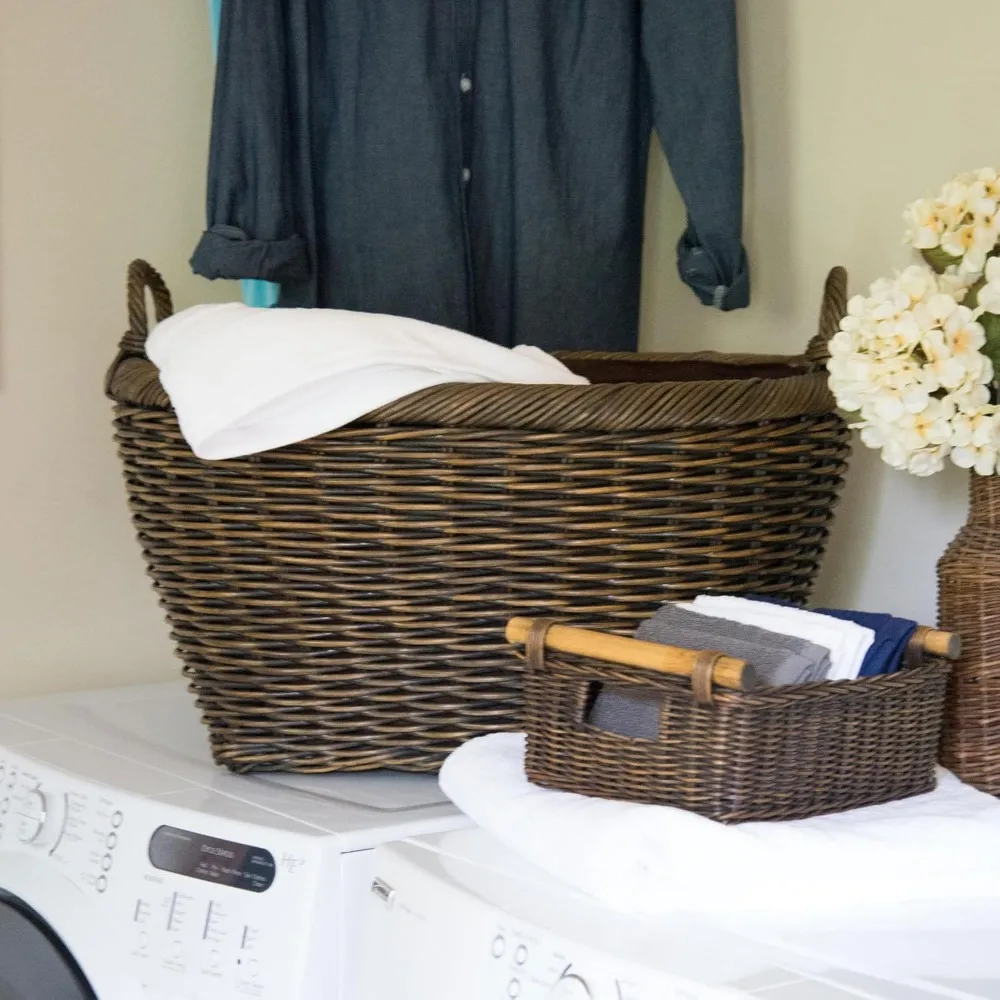
Cleaning Mistakes That Damage Wicker
Improper cleaning techniques are among the most common causes of wicker damage. Avoid these harmful practices:
Never soak wicker baskets in water. Prolonged exposure to water causes fibers to swell and then contract as they dry, weakening the structure and leading to warping and breakage.
Avoid harsh chemicals like bleach, ammonia, and strong detergents. These break down natural fibers and can discolor both natural and synthetic wicker. Even diluted bleach should only be used as a last resort for severe mold issues.
Don’t use abrasive scrubbers like steel wool or stiff brushes, which scratch and damage the wicker surface.
Never put wicker baskets in washing machines or dishwashers. The mechanical action and heat will destroy the basket structure.
Avoid excessive water when cleaning natural wicker. Instead, use barely damp cloths and brushes for controlled moisture application.
Our wicker laundry baskets are designed to hold laundry items, not to be washed themselves. Following proper cleaning techniques will keep these functional pieces looking their best.
Environmental Hazards: What to Avoid
Environmental factors can silently damage your wicker baskets over time. Be aware of these hazards:
Direct Sunlight Exposure
Prolonged exposure to direct sunlight causes fading, drying, and brittleness in wicker fibers. Limit direct sun exposure to less than 2 hours daily, and rotate baskets regularly to prevent uneven fading.
Heat Sources
Keep wicker at least 3 feet away from heaters, radiators, fireplaces, and heating vents. Excessive heat dries out natural wicker, making it brittle and prone to breaking.
Extreme Humidity
Both very high humidity (above 70%) and very low humidity (below 30%) damage wicker. High humidity promotes mold growth, while low humidity causes natural wicker to become brittle and crack.
Outdoor Exposure
Unless specifically designed for outdoor use, keep indoor wicker baskets protected from rain, snow, and extreme temperature fluctuations, which can cause rapid deterioration.
Handling and Loading Errors
How you use your baskets affects their longevity. Avoid these common mistakes:
Don’t overload baskets beyond their weight capacity. Excessive weight strains the weaving and structure, leading to permanent damage.
Avoid carrying heavy items in baskets with delicate handles. Instead, support the basket from the bottom.
Don’t drag baskets across rough surfaces, which can damage the bottom weaving and structure.
Avoid stacking heavy baskets on top of fragile ones, which can cause compression damage and warping.
Don’t use baskets designed for decoration or light storage to hold heavy items like books or canned goods.
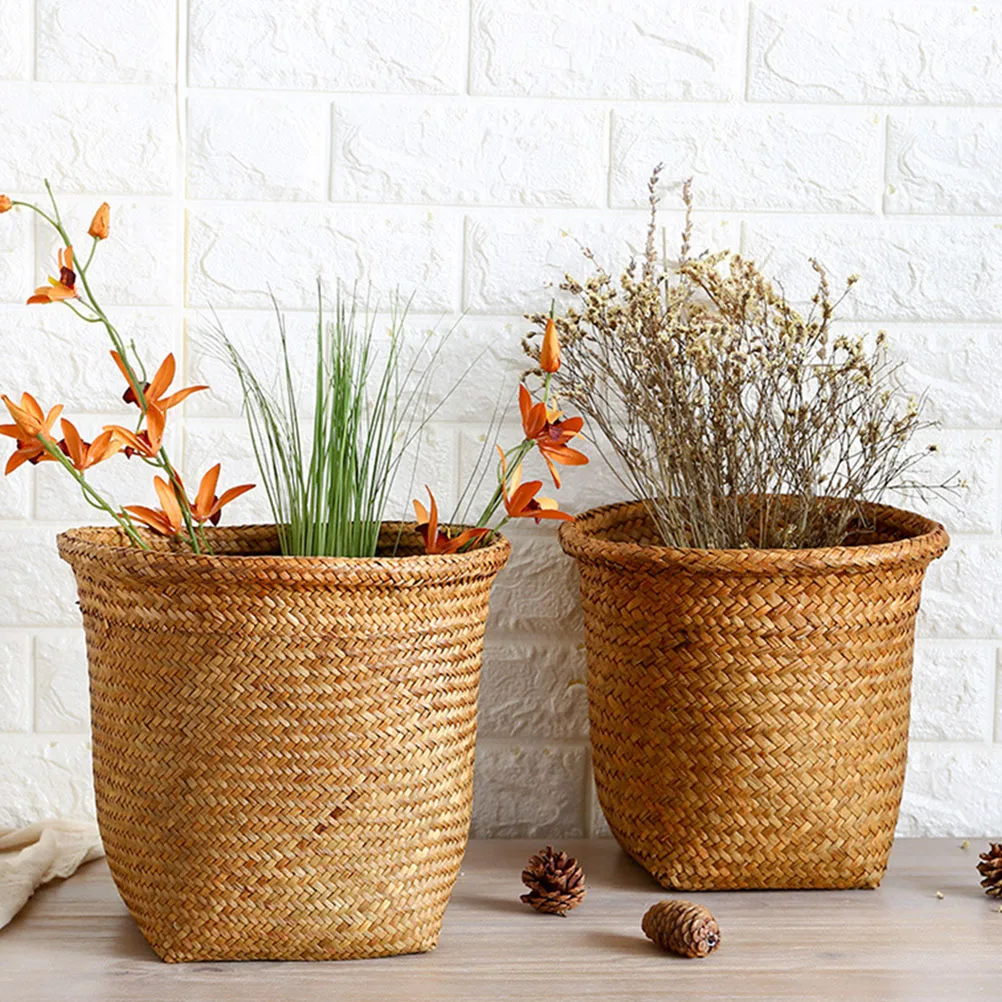
Essential Tools & Supplies for Wicker Care
Having the right tools on hand makes wicker maintenance simpler and more effective. Here’s what you’ll need:
For Regular Maintenance:
* Soft paintbrush or makeup brush for dusting
* Microfiber cloths that won’t snag on wicker
* Vacuum with soft brush attachment
* Small, soft-bristled toothbrush for detail cleaning
For Cleaning Solutions:
* Mild dish soap (free of dyes and harsh additives)
* White vinegar for mold treatment
* Baking soda for stubborn stains
* Spray bottle for controlled application
For Protection and Restoration:
* Boiled linseed oil or furniture wax for natural wicker
* UV-protective spray for synthetic wicker
* Soft cloths for applying treatments
* Cotton storage covers
These supplies are affordable and readily available. Store your wicker care items together so you can easily maintain a regular cleaning schedule. When considering whether wicker baskets are good for laundry, remember that proper maintenance tools contribute to their longevity in high-moisture laundry environments.
Maintenance Schedule: Keeping Your Baskets Beautiful
A regular maintenance schedule prevents major issues and keeps your wicker baskets looking their best. Here’s a practical timeline:
Weekly:
* Light dusting of exposed baskets
* Visual check for developing issues
Monthly:
* More thorough dusting of all baskets, including stored ones
* Inspection for signs of mold, mildew, or pest damage
Quarterly:
* Light cleaning with damp cloth and mild soap solution
* Check for structural issues like loose weaving
Bi-Annually:
* Deep cleaning as needed
* Rotation of displayed baskets to ensure even wear
* Application of protective treatments
Annually:
* Complete assessment of all baskets
* Repair of minor damage
* Reapplication of protective coatings
* Evaluation for potential professional restoration needs
Baskets in high-humidity areas or those frequently handled may need more frequent attention. Watch for early warning signs like musty odors, discoloration, or unusual brittleness, which indicate that immediate care is needed regardless of schedule.
Black Wicker Baskets, Rattan Storage Baskets, Tall Wicker Baskets, Wicker Shelf Baskets, Woven Storage Baskets
5-Tier Distressed Black Wood Frame Storage Tower with Removable Wicker Baskets for Home Organization$715.80 Select options This product has multiple variants. The options may be chosen on the product pageWicker Laundry Baskets, Woven Laundry Baskets, Woven Storage Baskets
$392.02 Select options This product has multiple variants. The options may be chosen on the product pageRattan Shelf Baskets, Rattan Storage Baskets, Small Wicker Baskets, Square Wicker Baskets
Square Plastic Wicker Storage Baskets Set of 3 with Collapsible Design for Cube Storage Organization$185.47 Select options This product has multiple variants. The options may be chosen on the product pageWicker Baskets with Handles, Wicker Storage Baskets, Woven Storage Baskets
$137.92 Select options This product has multiple variants. The options may be chosen on the product pageLarge Wicker Laundry Baskets, Tall Wicker Baskets, Woven Laundry Hampers, Woven Storage Baskets
$130.54 Select options This product has multiple variants. The options may be chosen on the product pageWicker Blanket Baskets, Woven Laundry Baskets
$89.60 Select options This product has multiple variants. The options may be chosen on the product page
Troubleshooting Common Wicker Issues
Even with proper care, wicker baskets may develop issues over time. Here are solutions for common problems:
Brittle or Dry Wicker:
Apply a light coat of boiled linseed oil or furniture wax to restore moisture and flexibility to natural wicker. Work the treatment into the fibers with a soft cloth and wipe away excess.
Minor Warping:
For slight warping, lightly dampen the affected area with a spray bottle, then gently reshape and allow to dry completely in the desired position. This works best for natural wicker.
Loose Weave:
Small gaps in weaving can often be pushed back into place while the wicker is slightly damp. For larger issues, a drop of wood glue applied with a toothpick can secure loose pieces.
Faded Color:
Natural wicker can be refreshed with a light application of linseed oil. For more significant restoration, specialized wicker stains are available, though testing in an inconspicuous area is recommended.
Mildew Odor That Persists:
After cleaning, place the basket in sunlight for 1-2 hours (but not longer), then bring inside and sprinkle with baking soda. Let sit overnight and vacuum thoroughly.
If damage is extensive or the basket has significant value, consider professional restoration.
Myth vs. Reality: Clarifying Wicker Care Misconceptions
Several myths about wicker care can lead to damaging practices. Let’s separate fact from fiction:
Myth: Soaking wicker rejuvenates dried-out fibers.
Reality: Soaking causes swelling and warping that weakens structural integrity. Instead, use controlled moisture application with light oils or waxes.
Myth: All wicker baskets can be used outdoors.
Reality: Only specifically designed synthetic wicker or treated natural wicker can withstand outdoor conditions. Standard indoor wicker will quickly deteriorate outside.
Myth: More soap means better cleaning.
Reality: Excess soap leaves residue that attracts dirt and is difficult to remove from woven fibers. A mild solution is more effective and gentler.
Myth: Old wicker can’t be restored.
Reality: Many vintage wicker pieces respond well to gentle cleaning and appropriate treatments. Age alone doesn’t determine whether restoration is possible.
Myth: Natural oils like olive or coconut oil are good for wicker.
Reality: Food-based oils can turn rancid and attract pests. Stick with specialized products like boiled linseed oil or furniture wax.
Understanding these realities helps you avoid well-intentioned but harmful care practices.
Special Care for Decorative and Antique Wicker
Decorative and antique wicker pieces often represent significant investments or family heirlooms that deserve extra care:
Clean antique wicker less frequently and with minimal moisture to preserve original finishes and structural integrity.
Use soft artist’s brushes for dusting intricate decorative elements rather than vacuum attachments.
When cleaning painted or adorned wicker, avoid contact with decorative elements when possible. Use cotton swabs for precision cleaning around these areas.
Consider wearing cotton gloves when handling valuable antique pieces to prevent oils from your skin transferring to the wicker.
Document condition with photographs before and after cleaning or treatment of valuable pieces.
For wicker with historical value or significant damage, consult a professional conservator rather than attempting DIY repairs.
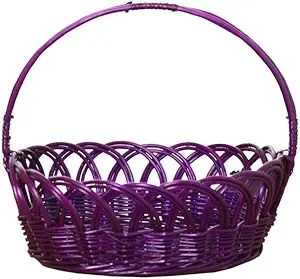
Signs that indicate professional restoration may be needed include significant structural damage, valuable provenance, rare construction techniques, or unique historical significance.
Frequently Asked Questions
Can I paint my wicker basket?
Yes, wicker can be painted, but proper preparation is essential. Clean thoroughly, apply a primer designed for wicker, and use several light coats of paint rather than one heavy coat. Spray paint often provides the most even coverage for wicker’s uneven surface.
How do I repair broken wicker strands?
For minor breaks, a small amount of wood glue applied with a toothpick can secure loose ends. For larger repairs, replacement reeds or specialized wicker repair kits are available. Soak replacement pieces briefly to make them pliable before weaving.
Is synthetic wicker better than natural for bathrooms?
Generally, yes. Synthetic wicker resists humidity better than natural materials, making it more suitable for bathroom environments. However, even synthetic wicker should be occasionally wiped down and allowed to dry completely.
How can I remove musty odors from stored baskets?
After cleaning, place in a well-ventilated area and sprinkle with baking soda. Let sit overnight, then vacuum thoroughly. For persistent odors, place in indirect sunlight for a few hours, or add a small container of activated charcoal inside the basket for several days.
Can I use furniture polish on my wicker?
Traditional spray furniture polishes are not recommended for wicker as they can build up in crevices and attract dust. Instead, use products specifically designed for wicker or natural options like diluted lemon oil or beeswax for natural wicker.
How often should I oil natural wicker baskets?
For baskets in regular use, apply oil treatments annually. Baskets in dry environments or those showing signs of drying may benefit from bi-annual application. Always use appropriate oils like boiled linseed oil rather than cooking oils.
What’s the best way to store seasonal wicker baskets?
Clean thoroughly before storage, ensure they are completely dry, stuff with acid-free tissue to maintain shape, and cover with cotton sheets (not plastic). Store in climate-controlled spaces with moderate humidity, away from direct sunlight and heat sources.
The effortless laundry organization with wicker baskets depends on proper care and maintenance to ensure these functional pieces remain beautiful and sturdy.
Eco-Friendly Wicker Care: Sustainable Practices
Environmentally conscious wicker care not only protects your baskets but also minimizes environmental impact:
Create natural cleaning solutions using ingredients like white vinegar, lemon juice, and baking soda instead of chemical cleaners.
Choose natural protective treatments like beeswax or plant-based oils over petroleum products when appropriate.
Repair rather than replace damaged baskets to reduce waste and consumption.
Repurpose baskets that are beyond functional repair as planters (lined with plastic), wall decorations, or craft materials.
Choose eco-friendly wicker basket materials when purchasing new items to support sustainable harvesting practices.
Using environmentally friendly care methods often produces gentler results that maintain wicker integrity while reducing chemical exposure in your home.
Is Professional Restoration Worth It?
When deciding whether to invest in professional restoration, consider:
- Historical or sentimental value of the piece
- Replacement cost versus restoration cost
- Extent of damage (structural issues generally require professional help)
- Your comfort level with DIY repairs
- Whether the basket is part of a valuable collection
Professional restoration typically involves:
* Complete cleaning and disinfection
* Repair of broken elements
* Replacement of damaged sections with matching materials
* Refinishing to match original appearance
* Structural reinforcement as needed
For family heirlooms or antique pieces with significant value, professional restoration is often worth the investment. Ask potential restorers about their experience with wicker specifically, as techniques differ from other furniture restoration.
Using Wicker Basket Liners: Protection and Style
Liners serve dual purposes—protecting your baskets while enhancing their functionality and appearance:
- Fabric liners prevent small items from falling through gaps in the weave
- Moisture-resistant liners protect baskets from spills and damp items
- Removable, washable liners extend basket life in high-use areas
- Decorative liners add color and style while protecting the basket interior
When selecting liners:
* Measure both the bottom diameter and height
* For round baskets, add 2 inches to diameter measurements for proper fit
* Choose washable fabrics for practical storage applications
* Consider cotton duck, canvas, or pre-made basket liners designed for easy cleaning
DIY liners can be simple fabric pouches or more structured sewn inserts. Even placing a small plate or tray at the bottom of a basket can provide protection when storing potentially leaky items.
With proper care and maintenance, your wicker baskets will continue to bring natural beauty and functional storage to your home for many years to come. The investment in quality care pays dividends in extended basket life and preserved appearance.

